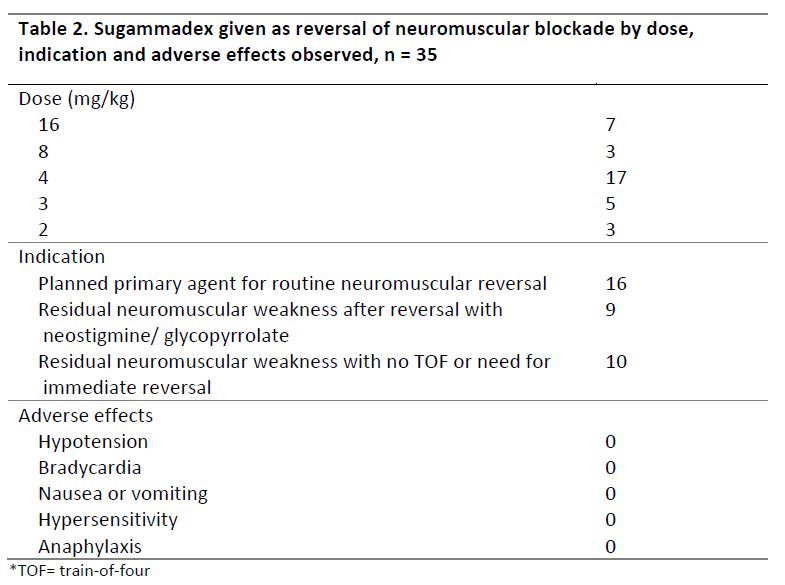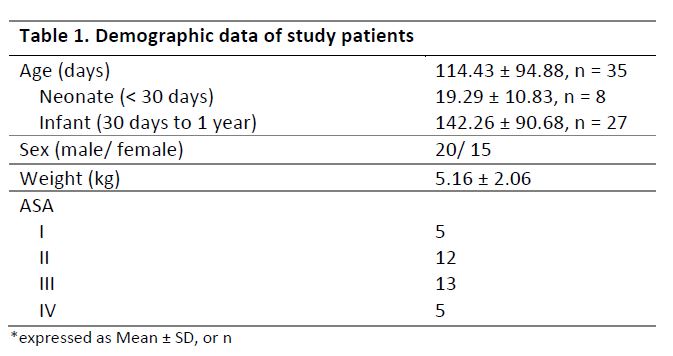NM-346
Safety of off-label sugammadex use in neonates and infants for reversal of non-depolarizing neuromuscular blockade
Thoeny A, Costandi A, Karnwal A
Children's Hospital Los Angeles, Keck School of Medicine of USC, Los Angeles, CA, United states
Introduction: Sugammadex is attractive for reversal of aminosteroid non-depolarizing neuromuscular blockers (NDMB) as it produces rapid reversal after deep paralysis without notable adverse effects. Pediatric use is limited due to lack of FDA approval under age 18 and few randomized-controlled trials (RCTs) in young children1,2. Support in neonates is even more scarce, though a cohort study3 demonstrated use without adverse events. Aim: To assess safety of sugammadex for neuromuscular blockade reversal in neonates and infants < age 1.
Methods: Pharmacy database of sugammadex dispensed from January-October 2017 was used to flag corresponding anesthesia records. Inclusion criteria were age < 1 year, ASA I-IV, and confirmed sugammadex given after rocuronium or vecuronium. Primary outcome was incidence of adverse effects determined by intraoperative and post-anesthesia records.
Results: Thirty-five patients (8 neonates, 27 infants) were enrolled; 9 patients without dose documentation were excluded. Patient age, sex, weight and ASA classifications are shown in Table 1. Most patients underwent intra-abdominal surgeries (57%). Sugammadex dosing ranged from 2-16 mg/kg without adverse effects; indication for reversal included routine agent (46%), residual weakness (26%) and no TOF/ need for immediate reversal (28%) (Table 2).
Discussion: This retrospective study demonstrates safe clinical use of sugammadex for routine, residual, and urgent neuromuscular blockade reversal in infants under age 1, including neonates. Importantly, sugammadex did not produce bradycardia in this study, suggesting it may be a more hemodynamically stable alternative to neostigmine in infants. Study limitations include nature of retrospective design, small sample size, non-uniform anesthetic, and unaddressed efficacy. The range of clinical scenarios included represent a very generalizable population to daily pediatric anesthesia practice. Further study with RCTs is needed to draw formal conclusions about safety and efficacy in this population.
Conclusions: Sugammadex was safely used in 35 infants under age 1 to provide reversal of rocuronium or vecuronium-induced neuromuscular blockade without any adverse effects.
References:
1. Liu et al. The efficacy and safety of sugammadex for reversing postop residual neuromuscular blockade in pediatric patients: A systematic review. Sci Rep 2017, 7: 5724.
2. Ozmete et al. Sugammadex given for rocuronium-induced neuromuscular blockade in infants: a retrospective study. J Clin Anesth 2016, 35: 497-501.
3. Alonso et al. Reversal of rocuronium-induced neuromuscular block by sugammadex in neonates. Eur J Anaesth 2014, 31: 163.
Top













